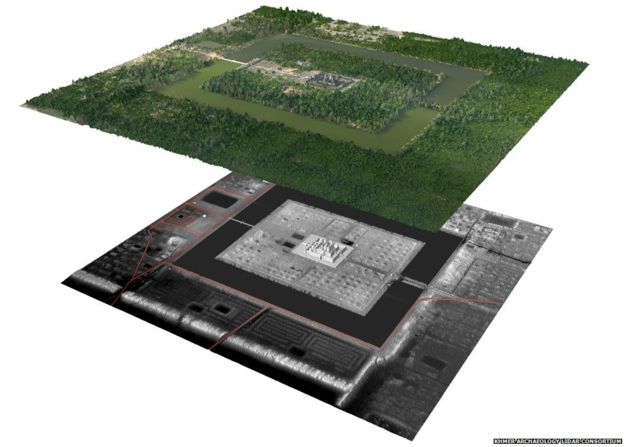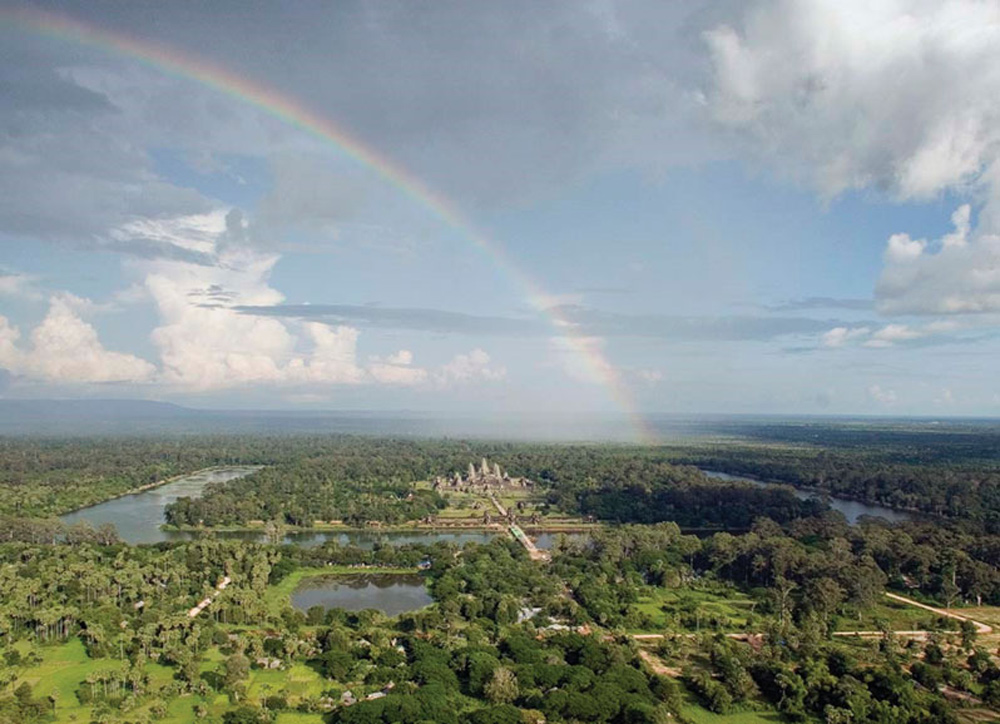The famous Angkor Wat temple complex in Cambodia, which is the largest religious complex in the world, was built in the first half of the 12th century. The Hindu temple, dedicated to the god Vishnu was constructed by King Suryavaram II of the Khmer civilization.
Angkor Wat – UNESCO World Heritage site and one of the ancient wonders of the world
The temple was rediscovered in the 1860s when a young French explorer named Henri Mouhot came across ruins in the Cambodian jungle. Prior to that, Angkor Wat was virtually unheard of beyond local villagers and monks.
But the belief that this great temple was once surrounded by a city bigger than Cambodia’s modern-day capital city, Phnom Penh, was entirely unknown.

Lidar technology has revealed the original city of Angkor – red lines indicate modern features including roads and canals
Most significant archaeological discovery in recent years
Recently, archaeologists revealed multiple medieval cities surrounding this massive religious complex of Angkor Wat. A team of researchers used airborne laser scanning technology known as Lidar (light detection and ranging) to shed new light on the civilization hidden around the world’s largest religious complex.
An extensive system of water channels, reservoirs, and roads connecting numerous temples and cities throughout the area were discovered.
The research was carried out by the French Institute of Asian Studies in Paris, the Cambodian national authority responsible for protecting Angkor Wat, and the Ministry of Culture and Fine Arts.







